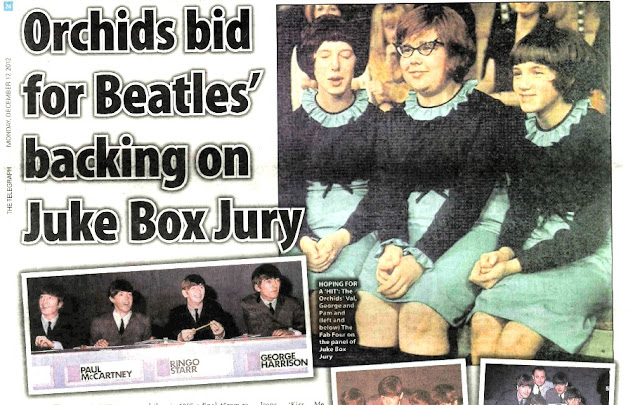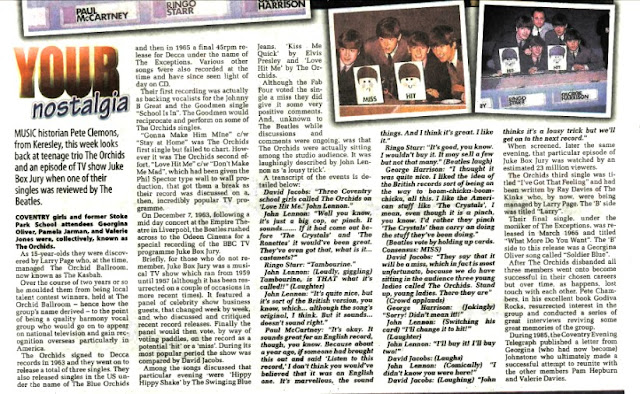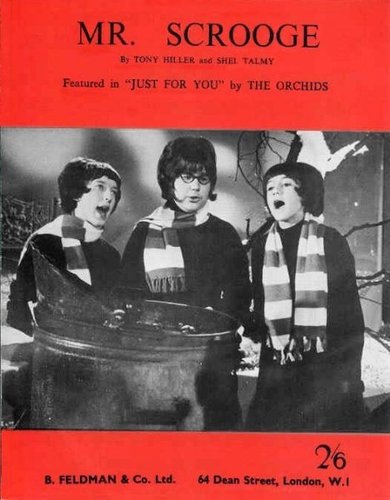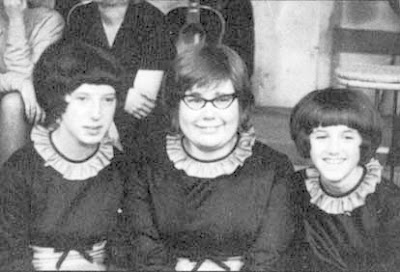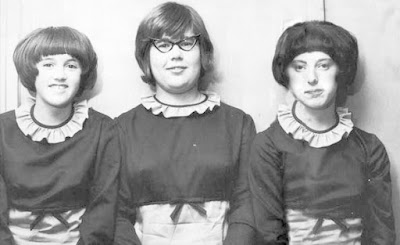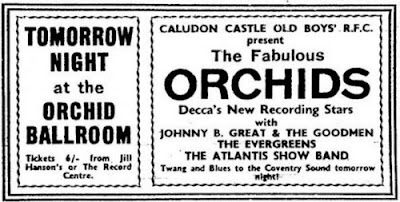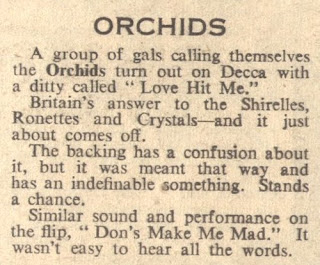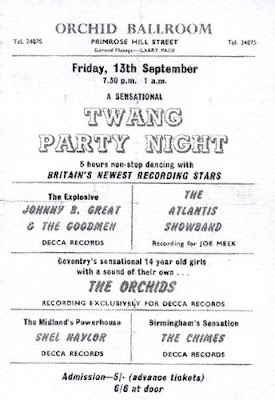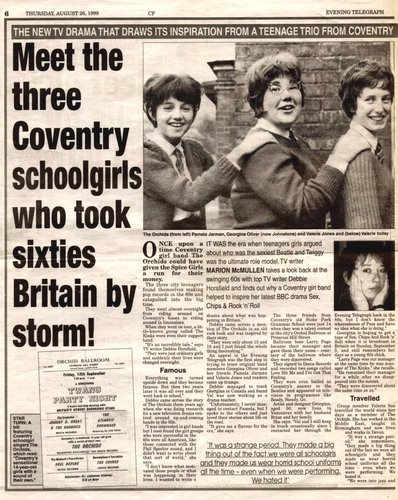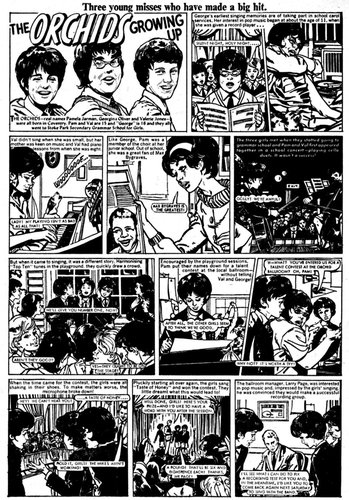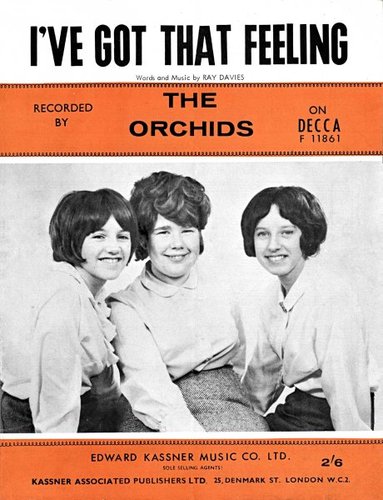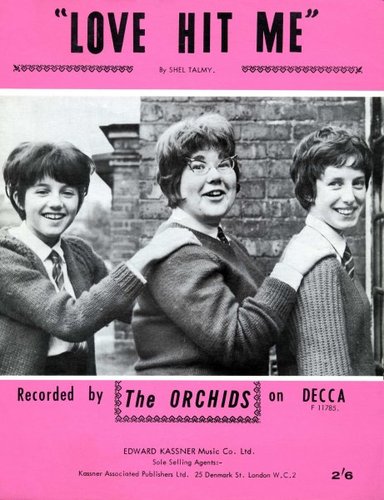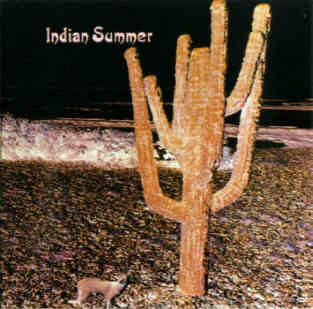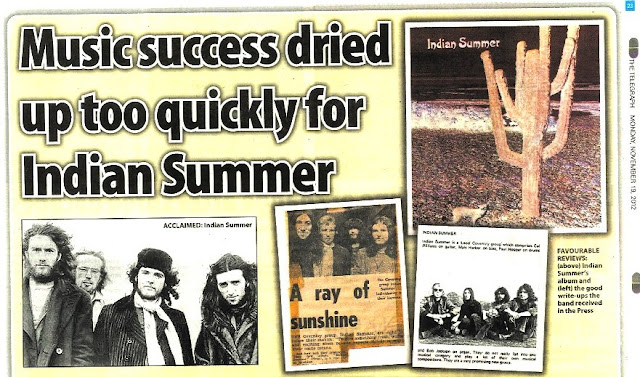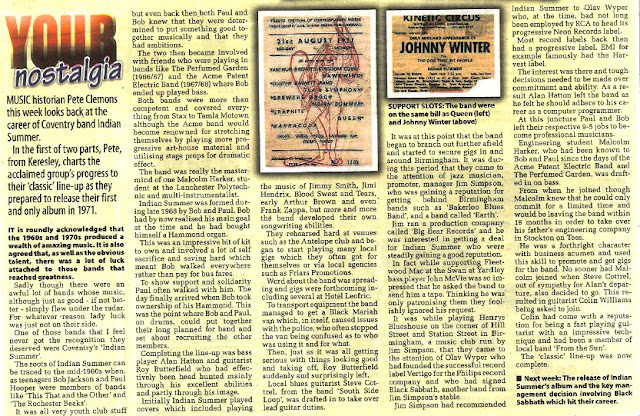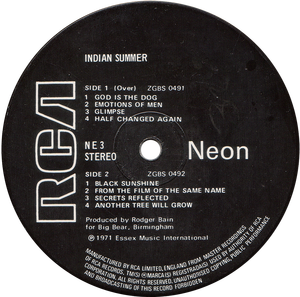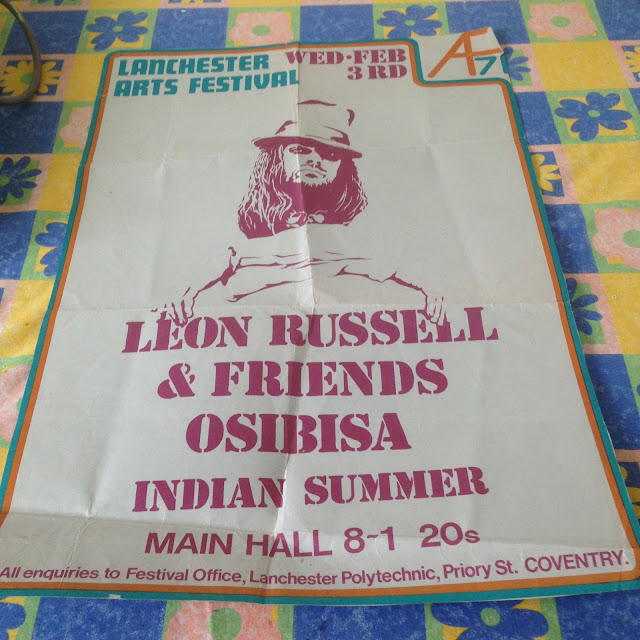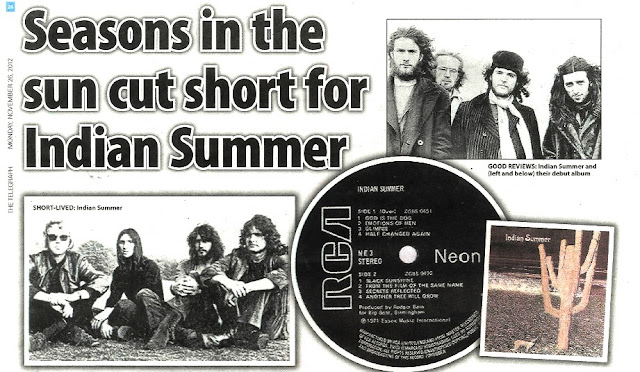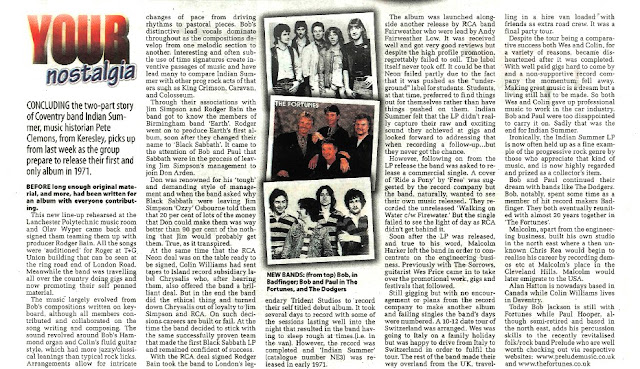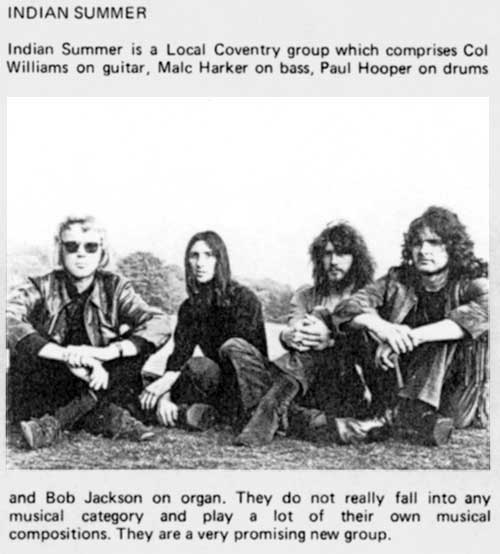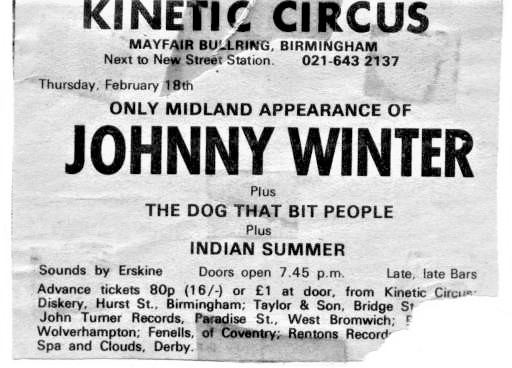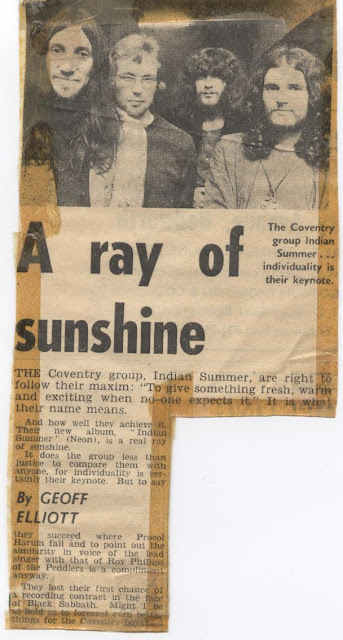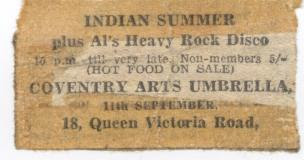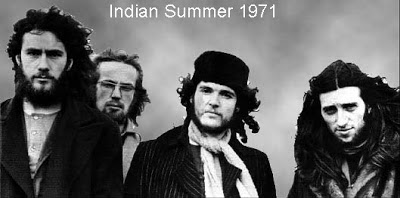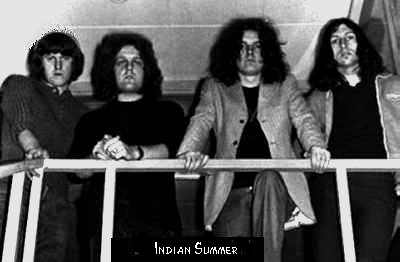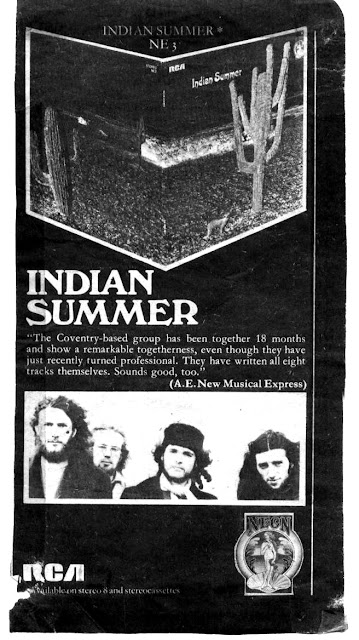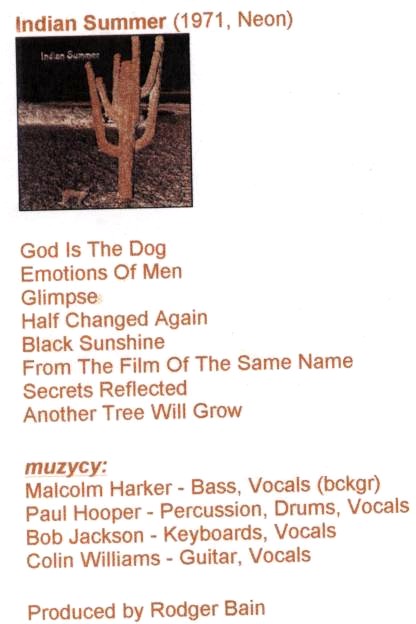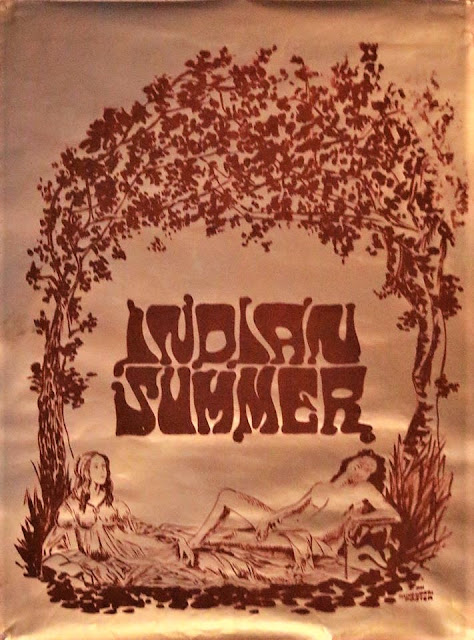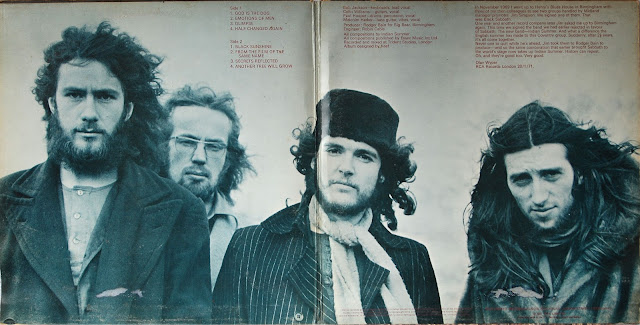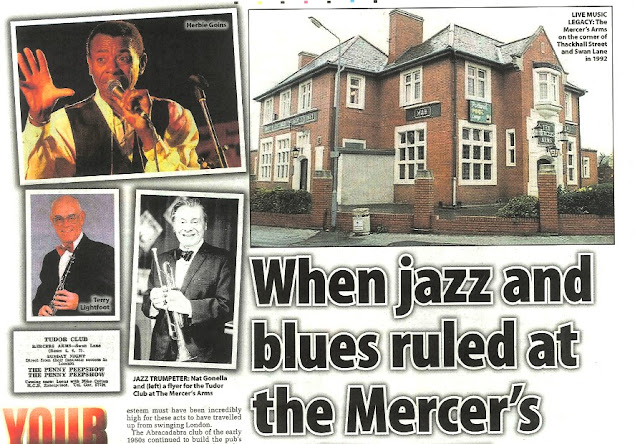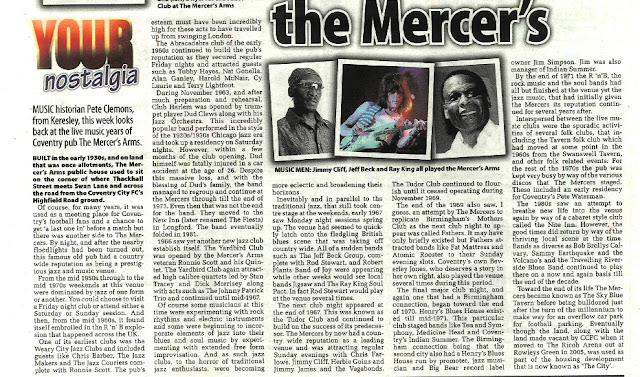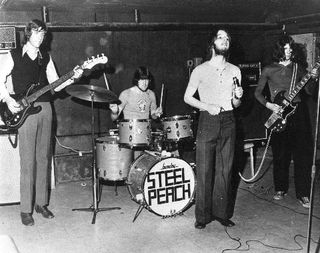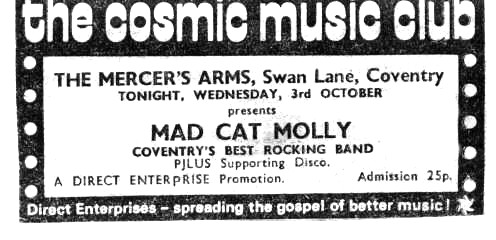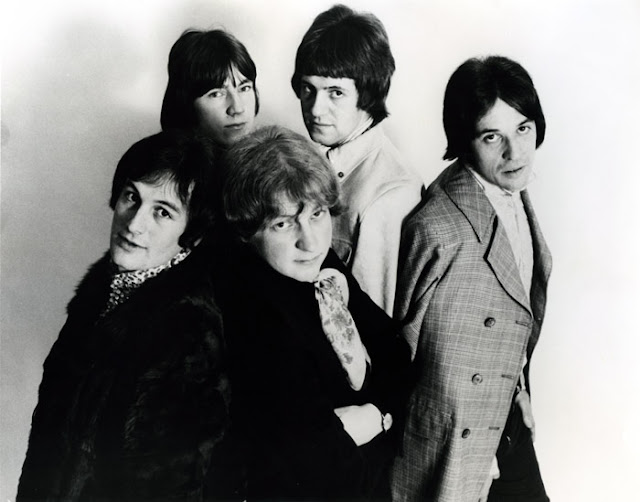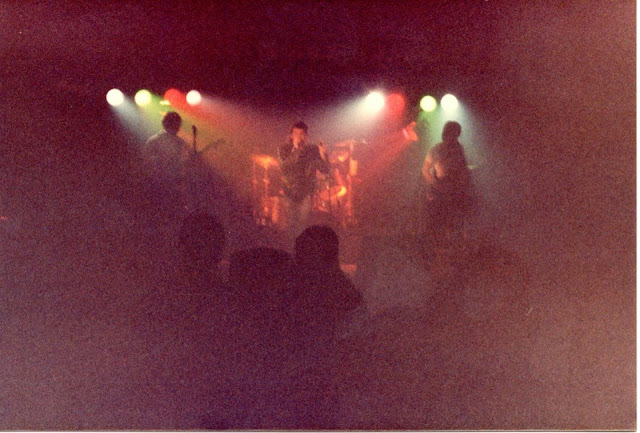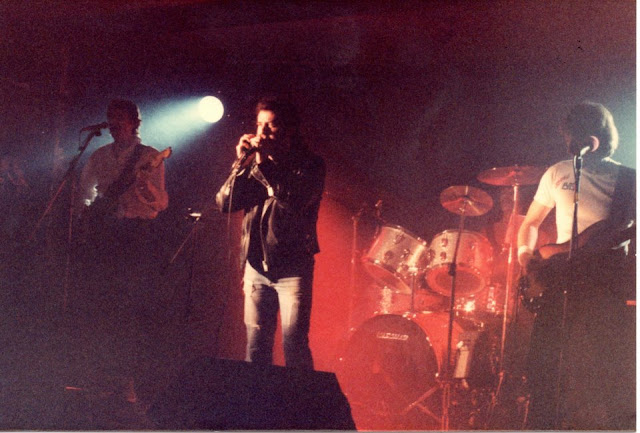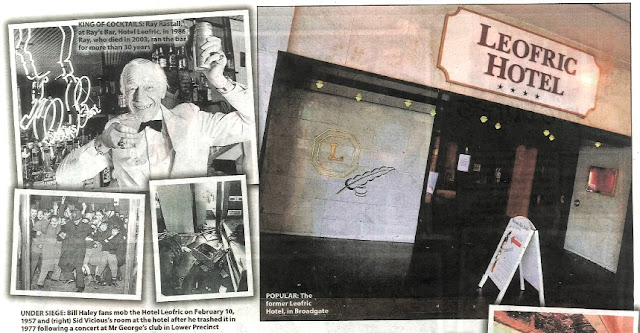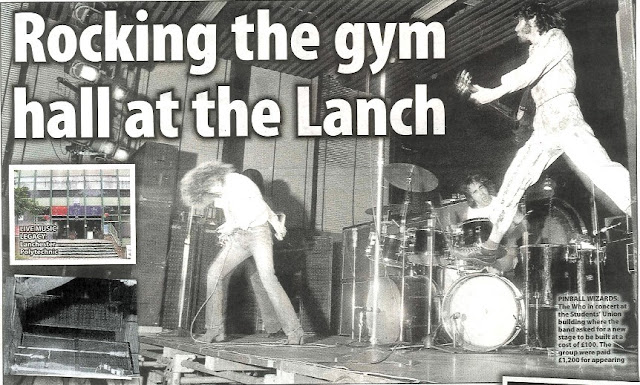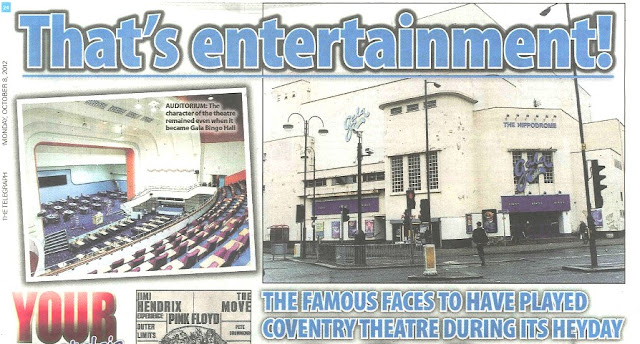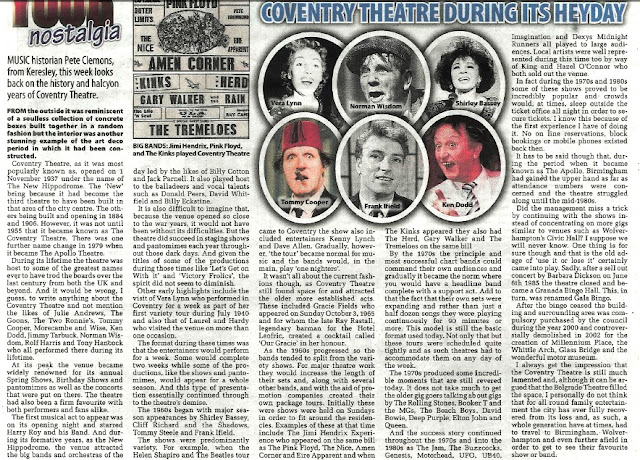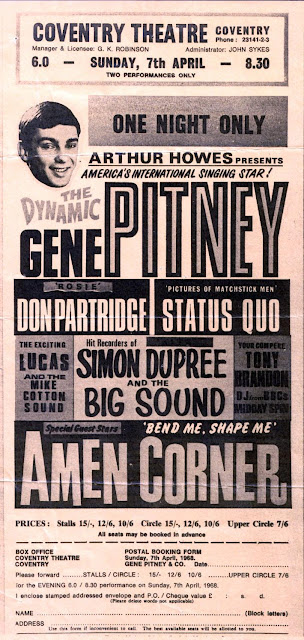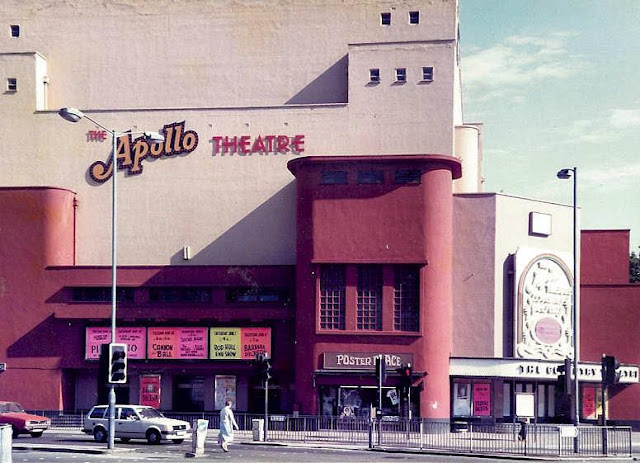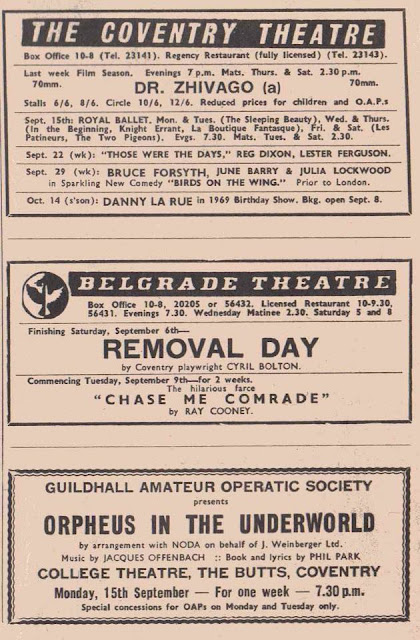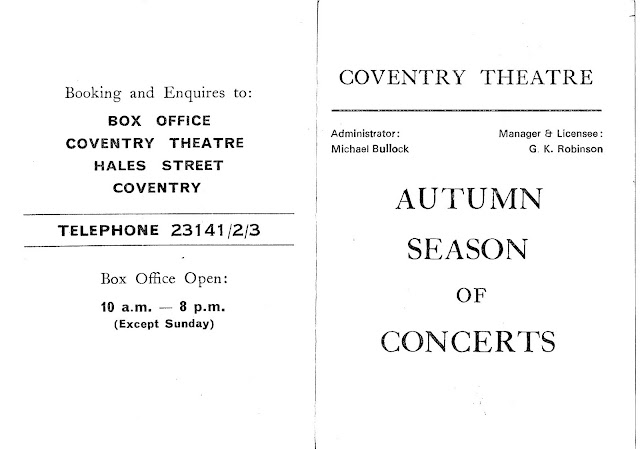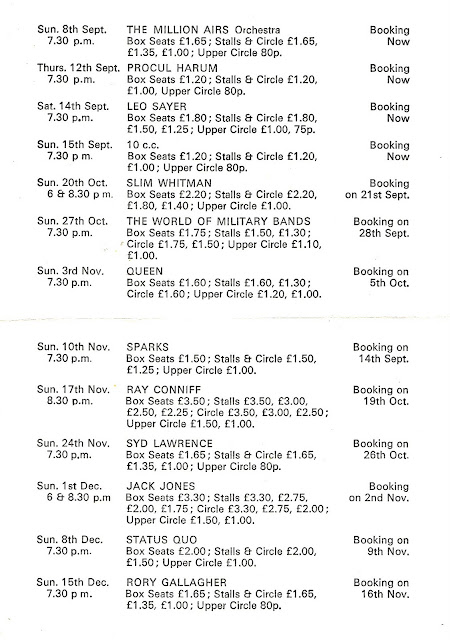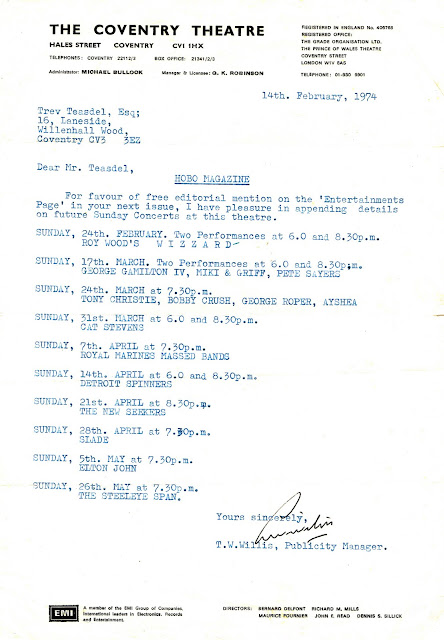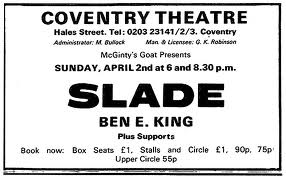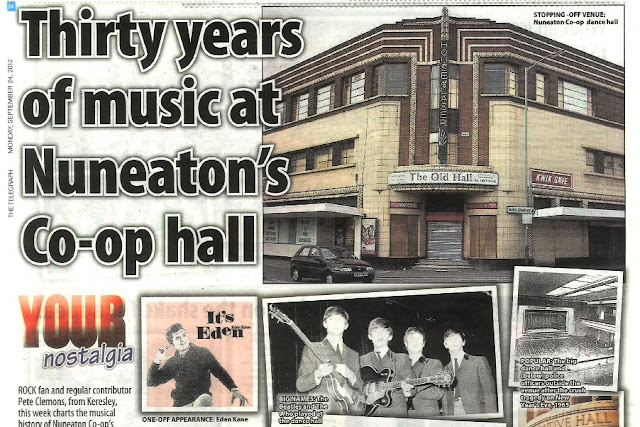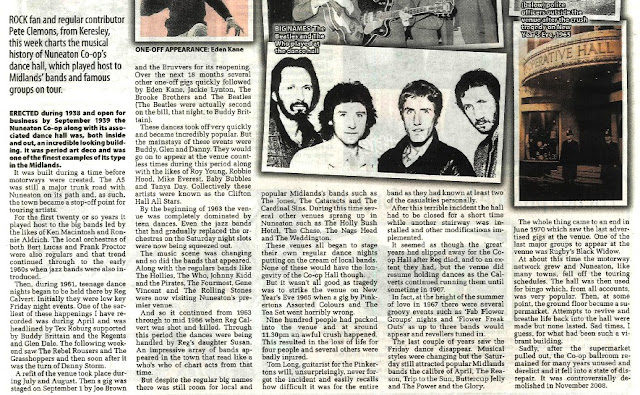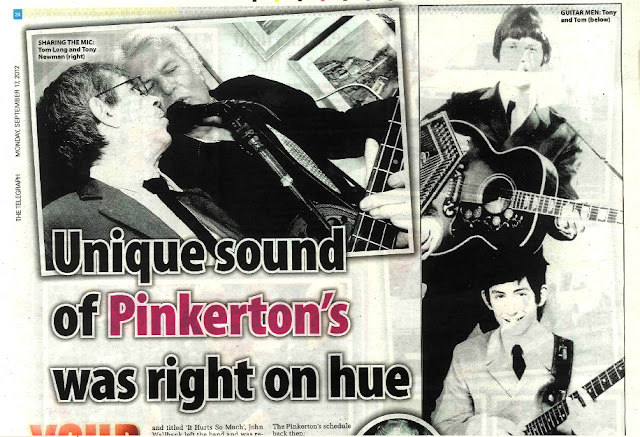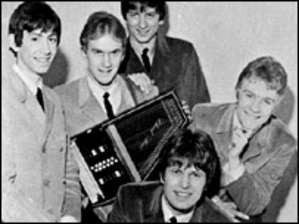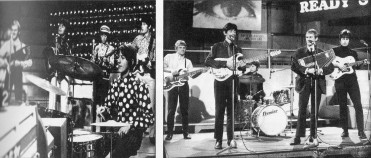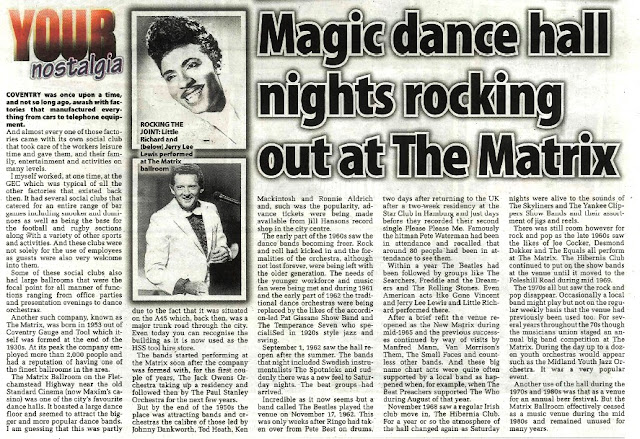Pete Clemons guides us through 60’s Coventry girl group The Orchids encounter with the Beatles on Juke Box Jury. Think the Crystals and you’ll be thinking in the right direction. Pete’s latest article for the Coventry Telegraph…
MUSIC historian Pete Clemons, from Keresley, this week looks back at teenage trio The Orchids and an episode of TV show Juke Box Jury when one of their singles was reviewed by The Beatles.
COVENTRY girls and former Stoke Park School attendees Georgina Oliver, Pamela Jarman, and Valerie Jones were, collectively, known as The Orchids.
As 15-year-olds they were discovered by Larry Page who, at the time, managed The Orchid Ballroom, now known as The Kasbah.
Over the course of two years or so he moulded them from being local talent contest winners, held at The Orchid Ballroom – hence how the group’s name derived – to the point of being a quality harmony vocal group who would go on to appear on national television and gain recognition overseas particularly in America.
The Orchids signed to Decca records in 1963 and they went on to release a total of three singles. They also released singles in the US under the name of The Blue Orchids and then in 1965 a final 45rpm release for Decca under the name of The Exceptions. Various other songs were also recorded at the time and have since seen light of day on CD.
Their first recording was actually as backing vocalists for the Johnny B Great and the Goodmen single “School Is In”. The Goodmen would reciprocate and perform on some of The Orchids singles.
“Gonna Make Him Mine” c/w “Stay at Home” was The Orchids first single but failed to chart. However it was The Orchids second effort, “Love Hit Me” c/w “Don’t Make Me Mad”, which had been given the Phil Spector type wall to wall production, that got them a break as their record was discussed on a, then, incredibly popular TV programme.
On December 7, 1963, following a mid day concert at the Empire Theatre in Liverpool, the Beatles rushed across to the Odeon Cinema for a special recording of the BBC TV programme Juke Box Jury.
Briefly, for those who do not remember, Juke Box Jury was a musical TV show which ran from 1959 until 1967 (although it has been resurrected on a couple of occasions in more recent times). It featured a panel of celebrity show business guests, that changed week by week, and who discussed and critiqued recent record releases. Finally the panel would then vote, by way of voting paddles, on the record as a potential ‘hit’ or a ‘miss’. During its most popular period the show was compared by David Jacobs.
Among the songs discussed that particular evening were ‘Hippy Hippy Shake’ by The Swinging Blue Jeans, ‘Kiss Me Quick’ by Elvis Presley and ‘Love Hit Me’ by The Orchids.
Although the Fab Four voted the single a miss they did give it some very positive comments. And, unknown to The Beatles while discussions and comments were ongoing, was that The Orchids were actually sitting among the studio audience. It was laughingly described by John Lennon as ‘a lousy trick’.
A transcript of the events is detailed below: David Jacobs: “Three Coventry school girls called The Orchids on ‘Love Hit Me.’ John Lennon.”
John Lennon: “Well you know, it’s just a big cop, or pinch. It sounds……. If it had come out before ‘The Crystals’ and ‘The Ronettes’ it would’ve been great. They’ve even got that, what is it… castanets?” Ringo Starr: “Tambourine.” John Lennon: (Loudly, giggling) Tambourine, is THAT what it’s called!!” (Laughter) John Lennon: “It’s quite nice, but it’s sort of the British version, you know, which… although the song’s original, I think. But it sounds… doesn’t sound right.”
Paul McCartney: “It’s okay. It sounds great for an English record, though, you know. Because about a year ago, if someone had brought this out and said ‘Listen to this record,’ I don’t think you would’ve believed that it was an English one. It’s marvellous, the sound things. And I think it’s great. I like it.”
Ringo Starr: “It’s good, you know. I wouldn’t buy it. It may sell a few but not that many.” (Beatles laugh) George Harrison: “I thought it was quite nice. I liked the idea of the British records sort of being on the way to boom-chicka-boomchicka, all this. I like the American stuff like ‘The Crystals’, I mean, even though it is a pinch, you know. I’d rather they pinch ‘The Crystals’ than carry on doing the stuff they’ve been doing.”
Consensus: MISS) David Jacobs: “They say that it will be a miss, which in fact is most unfortunate, because we do have sitting in the audience three young ladies called The Orchids. Stand up, young ladies. There they are” (Crowd applauds) George Harrison: (Jokingly) “Sorry! Didn’t mean it!!” John Lennon: (Switching his card) “I’ll change it to hit!” (Laughter) John Lennon: “I’ll buy it! I’ll buy two!” David Jacobs: (Laughs) John Lennon: (Comically) “I didn’t know you were here!” David Jacobs: (Laughing) “John thinks it’s a lousy trick but we’ll get on to the next record.”
When screened, later the same evening, that particular episode of Juke Box Jury was watched by an estimated 23 million viewers.
The Orchids third single was titled “I’ve Got That Feeling” and had been written by Ray Davies of The Kinks who, by now, were being managed by Larry Page. The ‘B’ side was titled “Larry”.
Their final single, under the moniker of The Exceptions, was released in March 1965 and titled “What More Do You Want”. The ‘B’ side to this release was a Georgina Oliver song called “Soldier Boy”.
After The Orchids disbanded all three members went onto become successful in their chosen careers but over time, as happens, lost touch with each other. Pete Chambers, in his excellent book Godiva Rocks, resurrected interest in the group and conducted a series of great interviews reviving some great memories of the group.
During 1985, the Coventry Evening Telegraph published a letter from Georgina (who had now become) Johnstone who ultimately made a successful attempt to reunite with the other members Pam Hepburn and Valerie Davies.
………………………………………..
Georgina Oliver – lead vocals
Pamela Jarman – vocals
Valerie Jones – vocals
Sources Rex Brough – Dean Nelson
The Orchids were a trio of 15-year-old girls from Coventry who went from winning a local
talent contest to national television and an international recording career. They won their contest at Coventry’s Orchid Ballroom, thus acquiring their name, and fell right into the managerial arms of Larry Page (renowned for his later work with the Troggs). They were signed to English Decca in 1963 and released the first of three British singles that year, “Gonna Make Him Mine” b/w “Stay At Home,” produced by Shel Talmy and picked up on Ready Steady Go Despite that exposure, the single didn’t chart, but the trio was unusual enough in England (where “girl” singers tended to be in their 20’s) to get lots of television appearances and even a spot in the movie Just For You, singing “Mr. Scrooge.” Their second single, “Love Hit Me,” received a huge, Phil Spector wall-of-sound style production that got the trio pegged as England’s (or at least Decca’s) answer to the Crystals.
From Rex Brough –
“For the best article on this fantastic girl group, go to Spectropop, the ultimate girlgroup website. Ian Slater and Ian Chapman are the authors.
Coventry’s only girl-group’s career started when they won a competition at the Orchid
Ballroom. Larry Page the resident DJ spotted the Stoke Park Grammar schoolgirls and got them a deal with Decca. Shel Talmy (Who, Kinks etc..) produced their records. As a girl-group they probably were the only one that successfully emulated stateside groups like Crystal/Shirelles. They sounded how they looked, Coventry schoolgirls against a Spectoreque backing, particularly on “Love hit me”. Wonderful! Next to the Orchids, other British girl-groups sound too polished.
The TV show Ready Steady Go! played “Gonna Make Him Mine”, as dancer Patrick Kerr demonstrated the Hitch-Hiker. Also they featured in the 1964 pop movie Just For You, singing “Mr. Scrooge”.
In America they were billed as the Blue Orchids to avoid clashing with a homegrown Orchids. After that they changed their name to the Exceptions and cut one more single under that name. Apparently they did a Bert Berns, one of his own songs, “Just Like Mine”. Also there was a session with Andrew Oldham, a song called “Society Girl”, but this, like the Berns track never saw the light of day.
Great Coventry group – Where are they now? Pam is headmistress of a school in Scotland, Georgina living in Vancouver, and celebrating 30 years marriage. Valerie moved to Cornwall.”
Singles
Gonna make him mine / Stay at home 1963 Decca
Love Hit Me / Don’t make me mad Dec 1963 Decca
I’ve got that feeling (written by the Kink’s Ray Davies)/Larry – 1964 Decca
Oo-Chang-a-lang – US single
What more do you want / Soldier Boy – As The Exceptions – 1965
Tracks found on Compilation CDs
Love Hit Me and Don’t make me mad – on Pop Goes the Sixties Volume 1 – See For Miles
Oo-Chang-a-lang and Soldier boy – on The Girls Scene – See For Miles
Memories from Georgina Oliver (Orchids Lead Singer!)- From Rex Brough
realise that we had the chance to work with some great musicians and producers. I’ve been told by a number of people that the records are very well produced.
We started off singing together in the schoolyard at recess and lunch hours. We would sing the latest songs with our friends and I guess after a while it just seemed to be us singing and everyone else listening. Pam entered us in a talent contest one Saturday at the Orchid ballroom. We used to go there dancing every Saturday afternoon. Val and I didn’t go that weekend for some reason and when Pam told us what she had done we were horrified! Anyway we won first prize – one whole pound!! Larry Page gave us the name The Orchids after the ballroom and arranged for some Decca people to come up to Cov to hear us sing. And as they say the rest is history.
We liked listening to American groups, mainly Tamla Motown, Crystals, Ronettes, Marvin Gaye,etc. We also liked the Beatles of course. Val liked the Stones but I wasn’t into them. We wanted to do songs like the Motown stuff but nobody listened to us! The song I wrote – Soldier Boy – was, I guess, styled after the “teenage angst” songs of the States, you know, my boyfriend rides a Harley and now he’s dead kinda thing. I enjoyed singing the less “poppy” music.
We didn’t have a name before the Orchids and yes Larry Page did name us. Very original,
right? To tell you the truth I can’t remember a whole lot about him. He was okay I guess, he wasn’t a Fagin or Svengali. When I think back I guess he wasn’t really that old but he seemed so to us being the fifteen year old brats that we were. I’m sure we must have exasperated him no end at times!
I remember the Orchid being very different in the daytime to when we saw it on Saturday afternoons with all the lights turned down and the music going. We would go for a meeting or rehearsal and the house lights would be on and everything looked kinda worn and seedy and a little dirty, like an aging actress with no make-up.
I remember Johnny B. Great and the Goodmenand Shel Naylor. We all went down to
London one evening after school to the recording studio (we recorded most of our records through the night, I guess it was cheaper then) We were all crammed into a van trundling down the M1. We girls got a case of the giggles and drove the guys mad. They threatened to dump us on the side of the road if we didn’t shut up! Our first ever recording was as backup on Johnny’s record “School is In”. I don’t remember singing with any of the groups other than that. We did make an appearance in Oxford in a show with Gerry and The Pacemakers and a few other people. Sounds Incorporated backed us when we did our set.
Again I don’t remember much about the people who did the technical stuff at our recording sessions. Being teenagers we weren’t included in any of the decision making or discussions. They said “Sing” and we sang. That’s what we enjoyed doing and they said we were great so we were happy. I remember a few times we tried to make our feelings known. If we thought something was not to our liking we would try to tell them that we were members of the record buying public and if we didn’t like it then others wouldn’t, but I don’t think anyone really listened to us. I do remember the names. Shel Talmey,of course, Mike Leander, Bert Burns – all American. I do know that Big Jim Sullivan played guitar on a couple of our records. Sometimes we would just have to sing over a pre-recorded music track and we didn’t see any musicians at all. As I said we didn’t realise at the time what was going on around us and what amazing talent there was to back us up. I remember some of the time we spent with Andrew Oldham. I remember him driving us around London in his big American convertible. The top was down, the sun was shining as we listened to Dionne Warwick singing “Don’t Make Me Over” on a record player in the dashboard of the car. We were so impressed! At his flat we met the Beachboy’s father who gave us an LP of their’s that hadn’t been released in the UK. Marianne Faithful turned up after a while too. Like our view of Page Andrew Oldham seemed to us to be older but as you say he could have only been in his early twenties.
We never toured. We were booked to do a summer season in Great Yarmouth but it was
cancelled because of rules and regulations about school and dates. There were a few times when we couldn’t make appearances or sing live because of our ages. Pam was a few months younger than Val and I and it meant we couldn’t do a number of things.
We appeared on a number of TV shows. We were on Ready Steady Go a couple of times. Once with the Hollies. Graham Nash gave us a lift back to Coventry after the show as he was going home to Birmingham. We had to wear these horrible jade green and black dresses. We hated them! We also appeared on Juke Box Jury a few times. We were on the show the Beatles did from Liverpool. We were so excited that we might get to meet them. No such luck. We were seated in the audience and had to stand up in a spotlight after the Beatles voted our record a miss!!!!
We also appeared on some local news magazine shows. We made what you would now call a video of an unreleased song “Mr Scrooge” It was used in a film called “Just For You”. The movie starred Sam Costa as a dj who has a dream (I think) about playing all these records. The film included songs by The Batchelors, Freddie and the Dreamers and many more. Some of these performances found their way onto a U.S. video called Disk-O-Tek Holiday available on the net. The premise is kinda sappy with an American singer trying to get his song played by the radio stations. His journey is interspersed with videos by some American groups and some of the videos from Just For You. I have a copy of the video. In addition to our song it also has one by Johhny B. Great (without the Goodmen).
Yes, the schoolgirl look was all Larry Page’s idea. Do you think any teenager in their right mind would have come up with that one!! Speaking of the Kinks I guess you know that Ray Davies wrote “I’ve Got that Feeling” and I do remember a rumour back then that the Kinks were slated to be our backing group. When Page took them on I remember him asking us to come up with a new name for them. They were The Ravens at the time. I’m afraid we can’t take credit for the “Kinks”, someone else came up with that.
We never went to America. Our record, Ooh-Chang-a-Lang was a U.S. only release. We
were renamed the Blue Orchids on that disc because there was already a group called the Orchids in the States. For our last release, “What More do You Want”, they changed our name to The Exceptions to see if that would help. It didn’t! I think if we had been a bit older and been allowed to have more of a say in what we recorded we might have been a more successful. But by then it was clear that the next big thing was going to be guy groups, guitars and drums.
I guess my song is more soul than pop. I tend to lean more that way. If things had been
different I think I would have liked to end up singing jazz or blues. I remember a few songs that were never released – Jenny Let Him Go, Larry (!) Just Like MIne, and of course Mr Scrooge.
I guess it all ended in 1965 after our last release. I guess Decca didn’t renew our contract and it just kinda fizzled out. The three of us stayed friends and kept in touch until I left school at 16 to go to art college. The other two stayed on for the sixth form. After two years at Coventry College of Art and three years at West Sussex College of Art and Design studying textile design I liked the idea of being a perpetual student. I went to Weymouth teaching college thinking that maybe I would become a teacher. I soon realised that no, I didn’t want to do that!
After one term I left and went home with a boyfriend in tow. We were married in 1971 then we came to Canada in 1973. Over the years I have worked mainly at home. I’ve done some graphic design work for a Fisheries and Oceans magazine, proof reading, poetry courses, made and sold crafts, taught adult evening class. I’m now producing a monthly newsletter for a local vintage car club. I also sing in a choir but that’s mostly classical. Last year we performed Brahm’s German Requiem (in German!) and this year we did CArmina Burana by Carl Orff. I enjoy most kinds of music except Rap and Country. I’m particularly fond of 30’s, 40’s and 50’s standards. But it depends what mood I’m in. I like Mozart but I also like Cold Play and Radiohead.
The last I heard Pam was a teacher in Scotland but I haven’t been in touch with her since school. I contacted Val a number of years ago through the Cov. Evening Telegraph. We keep in touch via email. She was teaching art but recently quit to do her own work. She lives in Devon and has three children, a girl and two boys. It would be cool to have a reunion but I don’t think it would be musical!

